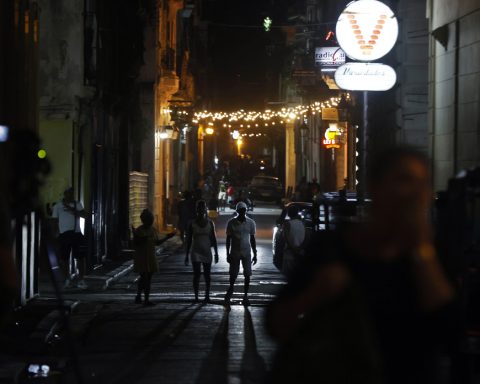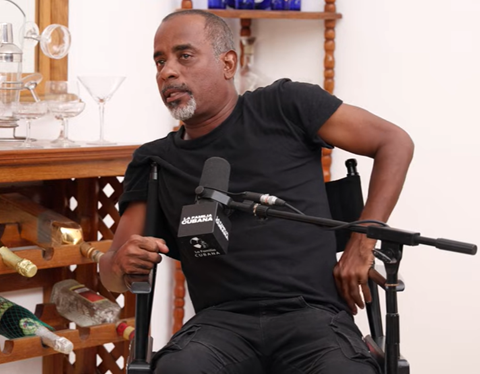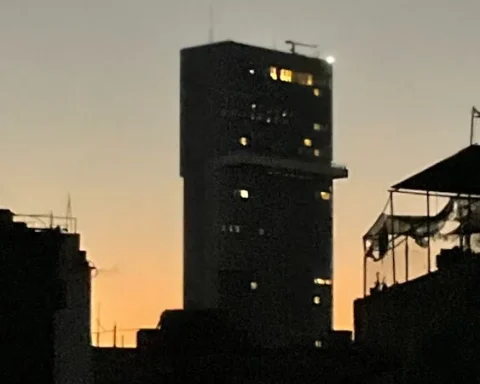In 1912 the Titanic sank, the President of the Spanish Government José Canalejas was assassinated, the first Balkan War began, the explorer Robert F. Scott reached the South Pole and, among many other things, Luis Torras Martínez, the The world’s oldest working painter, who this year approaches his 110th birthday with amazing vitality.
Torras lives with his wife María Jesús, who is about to turn 100, in a house in Vigo whose walls are hung with dozens of paintings signed by him, an author who gets up at 7:30 every day to stand in front of an easel without needing to find a special motivation to continue painting.
“The desire to excel. No one stands still. You have to improve, you always have to improve. That is enough to paint, ”says Torras in a talk with Efe in the center of a studio where oil paints, easels and pigments that he himself combines to find the colors that illuminate his work are piled up.
“It’s complicated, it’s not the same as taking the little tubes they sell, no. I create everything with the pigments”, she assures.
“I search for many essays, I do many kinds of painting, frescoes, temperas, eggshells, there is a lot to search for, and that constantly. You always want to improve”, explains Torras, who settles: “It’s painting, that’s my life”.
The main themes of Torras’ painting are static human figures, landscapes, still lifes and still lifes, and a large part of his work is in the Casa das Artes de Vigo, where the Torras Collection is located, but there is also his work in the Reina Sofía in Madrid, in the Quiñones de León Museum in Vigo, in the Pontevedra Museum or in the Santiago Museum of Contemporary Art (CGAC).
“Anything is useful” for inspiration when starting to paint, says Torras to explain where a job that he does not look for, but rather finds, comes from: “The other day I found a beggar, and he moved me and I merged with he says.
He confesses to being a follower of artists such as Piero della Francesca, whom he admires for the luminosity he achieves in his frescoes, or El Greco and Leonardo da Vinci, “superpainters” from whom “we all have to learn a lot”; as well as the work of the Spanish Daniel Vázquez Díaz, “a great painter who is not named much”.
Torras talks animatedly standing up without a single weakness being discerned, except for a persistent deafness that has accompanied him since the Civil War; so far go the memories of him.
“They don’t know what the war was, they have no idea. Historical memory is what has bothered my ear. They shot me there and they ‘escarallado’ me, “says the painter, to whom you have to speak loudly for a conversation to flow that inevitably runs through the past to reach the times of black and white, where he places the most exciting and also the most distressing moment of his life.
“Emotion when the war is over. Damn, you risked your life every day. We had a bad time. People don’t know what it’s like to sleep on land, get up and do things”, he says of a conflict that caught him on vacation in Galicia when he was a student at the San Fernando School of Fine Arts in Madrid.
“I am going to tell an anecdote from the war: one night we were coming out of the trenches and I met an uncle from Arbo (Pontevedra). What’s up, how are we doing, we started chatting. And he tells me: look, if I could go home now and only had a piece of cornbread and a sardine to eat, I would be the happiest man in the world… I didn’t want anything else. When the war ended, it was happiness for all”, explains the artist.
The greatest anguish was caused by the Second World War: “Damn, they killed each other. People dying in droves. I laugh at the pandemic and all the ‘shitty shit,’ he says today.
At his age, Torras says he doesn’t expect much more from life except to seek “perfection” in his work: “Do one thing that is as God intended and at least not lose my mind, that I can express myself,” he says.
He cares little about his legacy and about how he will be remembered, even less: “When I die, it’s over and done with heck, right? I have no desire… A dead donkey, barley tail”.
He assures, however, that he feels satisfied knowing that he has left a mark on his painting students, some of whom visited him 50 years after having passed through his classroom to acknowledge his effect on them, which he confesses moved him.
For the rest, he will continue to paint every day with the only hope of doing it, if possible, better and better, while summoning those present to continue chatting about painting and their memories next year, when he heads to 111, of course. , in front of an oil painting and with a brush in hand.














